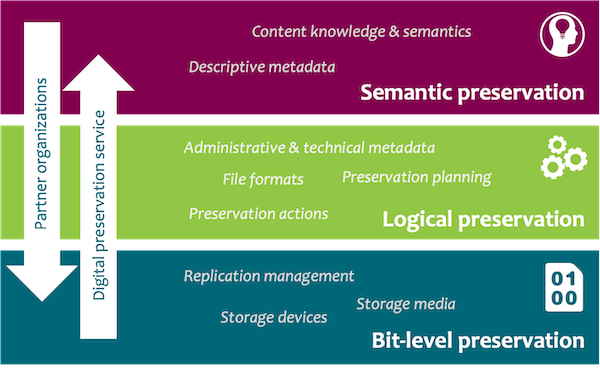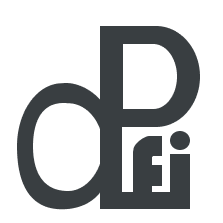A National Perspective on Core Preservation Processes
EOSC EDEN (Enhance Digital preservation strategies in European and National level) is an EU Horizon Europe project (2025–2027) coordinated by CSC, involving a total of 16 European organizations. The goal of the project is to develop strategies for digital preservation in Europe and nationally.
Core Preservation Processes
In the EOSC EDEN project, we have identified 30 Core Preservation Processes (CPPs) that every digital preservation organization should commit to either independently or in collaboration with multiple stakeholders. Despite the existence of various reference models (e.g., OAIS), a process perspective and a concise, structured description of processes have so far been missing.
In identifying the CPPs, several different frameworks and standards have been reviewed. Each CPP is described to include an expected input and output, a general description, process steps, and dependencies on other CPPs. The descriptions also include links to standards such as CoreTrustSeal, nestor Seal (DIN 31644), ISO 16363, PREMIS, and OAIS. Reference implementations and use cases have been added, which are hoped to be supplemented later. Machine readability of the CPPs will be also improved in the future.
The descriptions focus on processes for digital preservation of content, excluding processes that generally belong to IT system maintenance. These are completely independent of organization or system, and the process steps can be automated or manual. The CPPs improve collaboration and communication and help identify development areas. In practice, different implementations have varying levels of maturity.
Webinar on the Topic
- EOSC EDEN will hold an open webinar on CPPs on Dec 1, 2025 at 12-13 (Finnish time).
- Read more about the webinar and register
Publications
- The CPPs with descriptions and a report on the work have been published on Zenodo.
- The dependencies of the CPPs have been visualized as an interactive diagram.
- EOSC EDEN has published a news article about the CPPs.
Feedback
Feedback on the CPPs is welcome. It can be given in several ways as follows:
- GitHub discussion or Google Docs comments (instructions behind the link at the bottom of the page)
- Feedback form
National Perspective
How can the Core Preservation Processes identified in the EOSC EDEN project be adapted nationally, and what benefits can be gained from them? We aim to describe how the processes can support both the national Digital Preservation Services (DPS) and its partner organizations utilizing the services, taking into account both data description and management as well as the requirements set by digital preservation from a national perspective.
The digital preservation of cultural heritage and research data is organized through the DPS and partner organizations in collaboration. In the DPS, digital preservation is divided into three levels: semantic, logical, and bit-level. Semantic preservation concerns the management of descriptive information and knowledge of the content, which is the responsibility of the partner organization. The DPS provide technical expertise and technical service solutions. Bit-level preservation is entirely a technical matter under the responsibility of the DPS. At the logical preservation level, key aspects include file format management and migrations, which require both content knowledge and technical expertise, making planning a collaborative effort. The DPS have the capability to perform jointly planned migrations.

This collaboration model is unique internationally. Therefore, some functions covered in the CPPs identified by the EOSC EDEN project belong entirely or partially to the tasks of the partner organizations, for example, the preparation phase before transferring content to the DPS (pre-ingest). Through the identified CPPs, partner organizations and the DPS can reflect ontheir operations and identify potential development areas.
We have grouped all CPPs from the perspective of the national collaboration model in the table below. The guiding principle in grouping the CPPs has been the division between content knowledge and technical expertise. Many CPPs require both, however. It should be noted that since the descriptions of the CPPs do not recognize the Finnish national division of responsibilities, grouping them in this way is not straightforward. The grouping is therefore a rough categorization made from the perspective of the DPS. The groups are arranged according to the role of the partner organization (highest weight at the top).
| Group | Core Preservation Processes |
|---|---|
| CPPs that are practically entirely the responsibility of the partner organizations, as they relate to services offered to end-users. The DPS can, however, share their views in these cases within their expertise. |
|
| CPPs focusing on data management but including technical features. These processes are mainly handled by the partner organization, but the DPS provide extensive support and/or tools for them. |
|
| CPPs where responsibility sharing depends on the situation: Sometimes content knowledge is needed (partner organization handles), while in other cases it is a technical matter (the DPS handle). |
|
| CPPs handled by the DPS in collaboration with partner organizations. |
|
| CPPs that are purely technical and thus entirely the responsibility of the DPS. |
|
| CPP that has not been needed nationally at all. |
|
The development of the CPPs has been fruitful and has brought new perspectives to the DPS. We are confident that the CPPs and their review will be highly beneficial nationally, providing more theoretical foundation for collaboration between the DPS and partner organizations.
EOSC EDEN T1.2, Lindlar, M., Caron, B., Benauer, M., Kylander, J., Dekeyser, K., Addis, M., Levlin, M., Laukkanen, M., Lehtonen, J., Burger, F., Koho, T., Schwab, F., Molloy, L., & Zhang, F. (2025). M1.1 Report on Identification of Core Preservation Processes. Zenodo. https://doi.org/10.5281/zenodo.16992452
